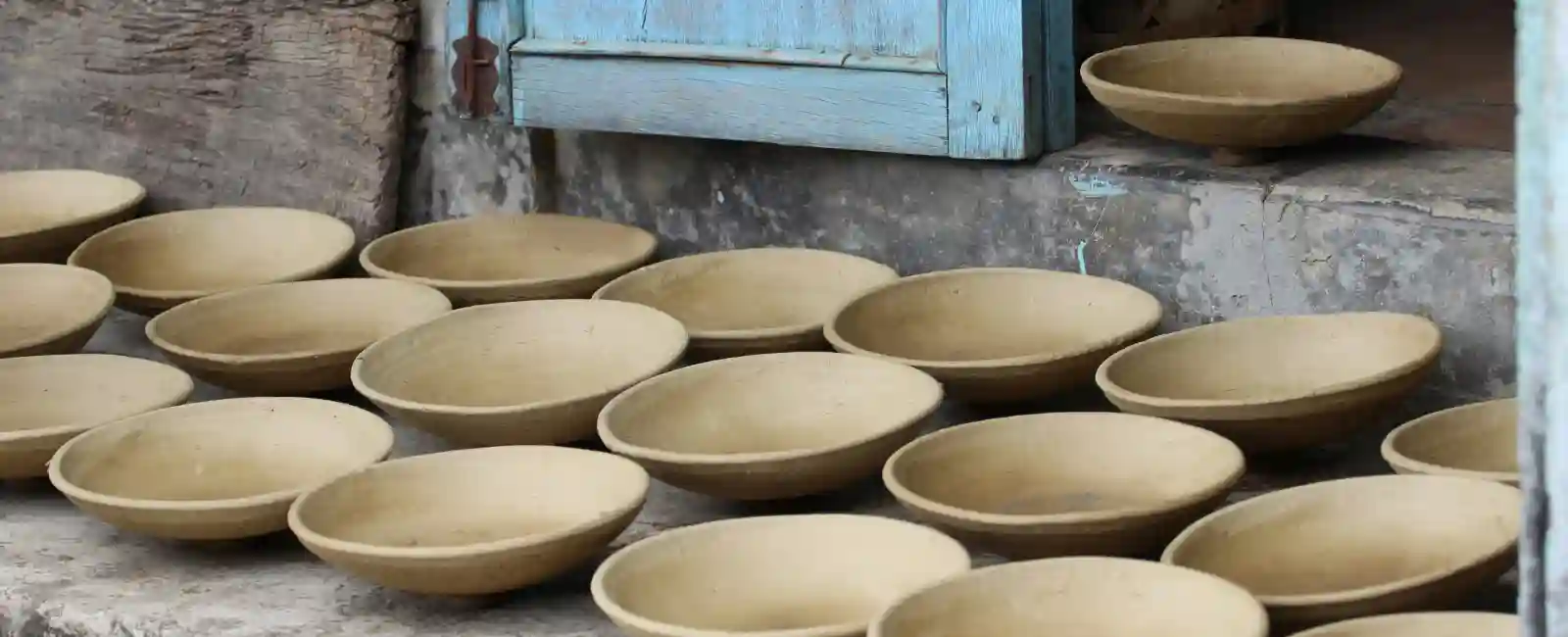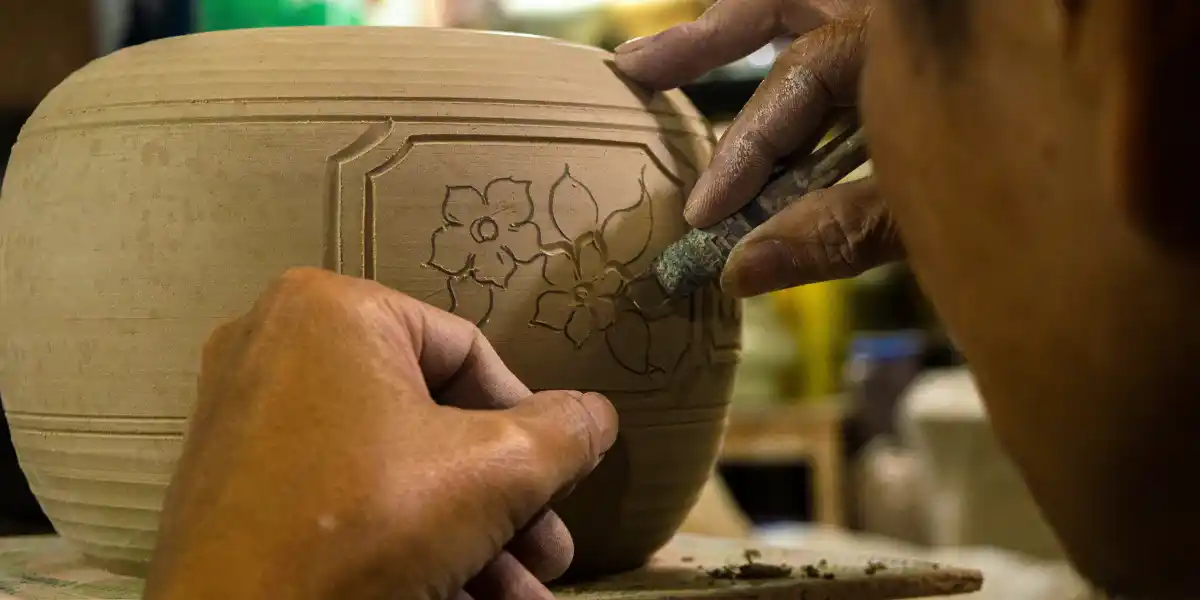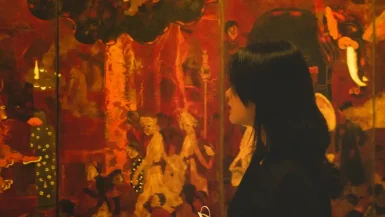Introduction
Vietnam boasts a vibrant tradition of handicrafts. Each region has its unique art forms, passed down through generations. These crafts are not just artistic expressions; they are integral to the cultural heritage of Vietnam. For tourists, exploring these handicrafts provides a deeper understanding of Vietnamese culture and history.
Tourist Tip: When visiting Vietnam, plan to explore local markets and villages renowned for their crafts. Engaging with artisans directly offers a unique cultural experience. Take the time to ask about the history and techniques behind their work. You can often find unique, handmade souvenirs that you won’t see anywhere else. Visiting these craft villages also supports local economies and helps preserve traditional skills. Don’t hesitate to participate in workshops to try your hand at crafting. Many artisans are happy to share their knowledge and teach visitors their techniques. Buying directly from artisans ensures that they receive a fair price for their work. This also allows for meaningful interactions and a deeper appreciation of the craft. Make sure to allocate enough time to fully explore these vibrant communities. Immersing yourself in the local culture through handicrafts can be one of the most rewarding parts of your trip to Vietnam.
Silk Weaving
Silk weaving is one of Vietnam’s most renowned handicrafts. Specifically, villages like Van Phuc, near Hanoi, have been producing exquisite silk for centuries. Moreover, the intricate patterns and vibrant colors of Vietnamese silk are highly prized. Additionally, visitors can witness the entire process, from silkworm farming to the final weaving.
Tourist Tip: Visit Van Phuc Silk Village to see traditional weaving techniques firsthand. Notably, the village is located just 10 kilometers southwest of Hanoi, making it an easy day trip. Furthermore, as you stroll through the village, you can observe skilled artisans at work on their looms. They use time-honored methods to produce the finest silk, renowned for its smooth texture and vibrant colors. Additionally, you can engage with the weavers and learn about the intricate process of silk production, from spinning to dyeing.
The village is also home to numerous shops where you can purchase high-quality silk products directly from the artisans. Items range from elegant scarves and ties to traditional ao dai dresses. Buying directly from the artisans ensures you get authentic, handcrafted silk while supporting the local community. The prices are often more affordable compared to city shops, and the quality is exceptional. Don’t miss the opportunity to take home a piece of Vietnam’s rich textile heritage. Van Phuc Silk Village provides a unique cultural experience that blends history, craftsmanship, and commerce.
Pottery and Ceramics
Bat Trang village, located near Hanoi, is famous for its pottery and ceramics. Artisans here create beautiful vases, bowls, and tiles, using traditional methods. The designs often feature intricate patterns and vibrant glazes. Each piece is a testament to the skill and creativity of the craftsmen.
Tourist Tip: In Bat Trang, you can try your hand at pottery making. Many workshops offer hands-on experiences where you can create your own piece. The workshops provide all the necessary materials, including clay, pottery wheels, and tools. Skilled artisans guide you through the entire process, from shaping the clay to decorating your piece. It’s a fun and educational activity suitable for all ages. After creating your pottery, you can choose to have it glazed and fired, making it a durable keepsake. These workshops are popular, so it’s advisable to book in advance. Besides pottery making, you can explore the village’s numerous ceramic shops. These shops sell a wide variety of items, from traditional vases to modern home decor. Visiting Bat Trang offers a unique opportunity to immerse yourself in a centuries-old craft tradition. It’s a memorable experience that provides insight into the local culture and artisan skills.
Lacquerware
Lacquerware is another prominent Vietnamese craft, involving a complex process of applying and polishing layers of lacquer. This craft is especially popular in regions like Hanoi and Ho Chi Minh City. The finished products, ranging from paintings to household items, are known for their durability and glossy finish.
Tourist Tip: Visit a lacquerware workshop in Hanoi or Ho Chi Minh City. Here, you can see the meticulous process and purchase unique pieces. These workshops often provide guided tours, allowing you to observe each stage of production. Artisans begin by shaping the wood or bamboo base, followed by multiple layers of lacquer application. The lacquer, made from the sap of lacquer trees, is carefully applied and polished. This process can take weeks, as each layer must dry and harden before the next is applied. The final steps include intricate inlays of mother-of-pearl, eggshell, or gold leaf. Watching the artisans at work is a testament to their skill and patience.
Many workshops also offer customization, so you can request specific designs or patterns. Purchasing directly from the workshop ensures authenticity and supports local craftsmen. Don’t forget to ask about the history and cultural significance of the designs. This will enrich your understanding and appreciation of the art form.
Embroidery
Embroidery is a traditional art form in Vietnam, particularly in the northern regions. Vietnamese embroidery is characterized by its delicate and intricate designs, often depicting scenes from nature. Artisans use silk threads to create these beautiful works on various fabrics.
Tourist Tip: Sapa and Hanoi are great places to find exquisite embroidery. In Sapa, ethnic minority groups like the Hmong and Dao are renowned for their detailed and colorful embroidery. Their designs often feature geometric patterns and symbols significant to their culture. In Hanoi, you can find sophisticated embroidered products, from clothing to home decor.
Look for workshops in both cities where you can watch artisans at work. This provides a fascinating insight into the meticulous techniques used. You might even have the opportunity to try your hand at embroidery. Purchasing directly from these workshops supports local artisans and ensures you get authentic, high-quality pieces. Look for items such as embroidered wall hangings, pillowcases, and traditional costumes.
In Sapa, visit local markets to find handmade embroidered goods. These markets offer a variety of products, showcasing the craftsmanship of different ethnic groups. In Hanoi, head to the Old Quarter for a blend of traditional and contemporary embroidered art. Here, artisans often combine modern designs with traditional techniques, creating unique pieces.
Bamboo and Rattan Weaving
Bamboo and rattan weaving is a widespread craft in rural Vietnam. Artisans create a variety of products, including baskets, mats, and furniture. These items are not only functional but also reflect the ingenuity and resourcefulness of Vietnamese craftsmen.
Tourist Tip: Visit craft villages like Phu Vinh near Hanoi. This village, in particular, is renowned for its skillful artisans who create a variety of bamboo and rattan products. Not only can you find everything from intricately woven baskets to beautifully crafted furniture, but you can also immerse yourself in the vibrant local culture. As you walk through the village, you’ll see artisans meticulously weaving bamboo strips into functional and decorative items. Moreover, the atmosphere is a blend of tradition and creativity, with each workshop showcasing unique designs. Additionally, many artisans are eager to share their techniques and stories, providing a rich cultural experience.
The products made in Phu Vinh are known for their durability and aesthetic appeal. Besides shopping, you can participate in weaving workshops to learn the basics of this ancient craft. Purchasing directly from the artisans ensures that you’re getting authentic, high-quality items. It also supports the local economy and helps preserve traditional crafting techniques. A visit to Phu Vinh offers a unique glimpse into Vietnam’s rich artisanal heritage.
Wood Carving
Wood carving is a highly esteemed craft in Vietnam, with roots tracing back to ancient times. Artisans from villages like Dong Ky produce intricate carvings, from small figurines to large furniture pieces. These carvings often depict traditional motifs and scenes from Vietnamese mythology.
Tourist Tip: In Dong Ky village, you can watch skilled carvers at work. This is also an excellent place to buy authentic wooden art pieces. The village is renowned for its expertise in producing intricate woodwork, particularly furniture. Walking through the village, you can hear the rhythmic sound of chisels and mallets. Artisans often use traditional techniques passed down through generations, ensuring each piece is unique. You’ll find elaborately carved tables, chairs, and cabinets, often adorned with dragon motifs and floral designs.
Many workshops are open to visitors, allowing you to see the entire process from raw wood to finished product. The craftsmen are usually very welcoming and happy to explain their methods. You can also find smaller items like wooden statues and decorative panels, perfect for souvenirs. Prices in Dong Ky are reasonable, especially considering the quality and craftsmanship. Buying directly from the artisans not only ensures authenticity but also supports the local economy.
Traditional Painting
Vietnamese traditional painting, including silk and lacquer paintings, reflects the country’s rich cultural heritage. These artworks often feature themes from daily life, folklore, and natural landscapes. Famous painting villages, like Dong Ho, showcase unique styles. Dong Ho village, located near Hanoi, specializes in traditional woodblock paintings. Artisans in this village create paintings with vivid colors and bold, simple lines. They often depict scenes from Vietnamese folklore, daily life, and historical events. Artists use unique techniques that involve carving intricate designs onto wooden blocks. They then print images onto paper made from the bark of the dó tree. Natural materials provide the colors: charcoal for black, leaves for green, and flowers for red.
Tourist Tip: While in Dong Ho, visit the workshops where artisans demonstrate the entire printing process. Engaging with these craftsmen can provide a deeper appreciation for their meticulous work.
The village is also home to several small museums and galleries displaying a wide array of these traditional artworks. Some of the most famous prints include “The Rat’s Wedding” and “Jealousy”, each with its own story and cultural significance. Visitors can also participate in hands-on workshops to try their hand at making their own woodblock prints. The experience offers a unique souvenir and a personal connection to this timeless art form. Bring home an authentic Dong Ho woodblock painting as a memorable keepsake. These artworks make for unique and culturally rich gifts.
Conical Hats (Non La)
The conical hat, known as Non La, symbolizes Vietnam. Artisans craft these hats from palm leaves and bamboo. They provide practical protection from the sun and rain while also serving as cultural symbols. Different regions showcase unique styles of Non La.
Tourist Tip: Hue offers high-quality Non La. Visit local markets and workshops to see the hat-making process firsthand.
Calligraphy
Vietnamese calligraphy is a revered art form, especially during the Lunar New Year. Artists use traditional brushes and ink to create beautiful characters on paper or silk. This art form is deeply connected to Vietnamese poetry and literature.
Tourist Tip: In Hanoi, during the Lunar New Year, visit the Temple of Literature. Here, you can see calligraphers in action and even request a personalized piece.
Stone Sculpture
Marble Mountains near Da Nang are famous for their stone sculptures. Artisans carve intricate statues, figurines, and household items from marble and other stones. These sculptures often depict religious figures and mythological creatures.
Tourist Tip: Visit the Marble Mountains to explore workshops and galleries. You can buy unique stone carvings directly from the artisans.
Paper Craft
Paper crafting, including the making of paper flowers and folk paintings, is a traditional Vietnamese art. Villages like Thanh Tien, near Hue, are known for their paper flowers, used in local festivals and rituals. These crafts are vibrant and reflect the local culture and traditions.
Tourist Tip: Thanh Tien village is a great place to see paper flower making. Participate in a workshop to make your own paper flowers.
Metalwork
Metalwork in Vietnam includes the crafting of items from bronze, silver, and gold. Artisans create a wide range of products, from jewelry to religious statues. Villages like Ngu Xa in Hanoi are famous for their bronze casting.
Tourist Tip: In Ngu Xa village, visit workshops to see traditional bronze casting. You can purchase finely crafted metal items as souvenirs.
Conclusion
Vietnam’s handicrafts offer a window into the country’s rich cultural heritage and artistic traditions. Each craft tells a story of history, skill, and creativity. For tourists, exploring these crafts provides a deeper connection to the people and culture of Vietnam.
Tourist Tip: Make sure to support local artisans by purchasing directly from them. This helps preserve traditional crafts and provides a sustainable livelihood for the craftsmen..




